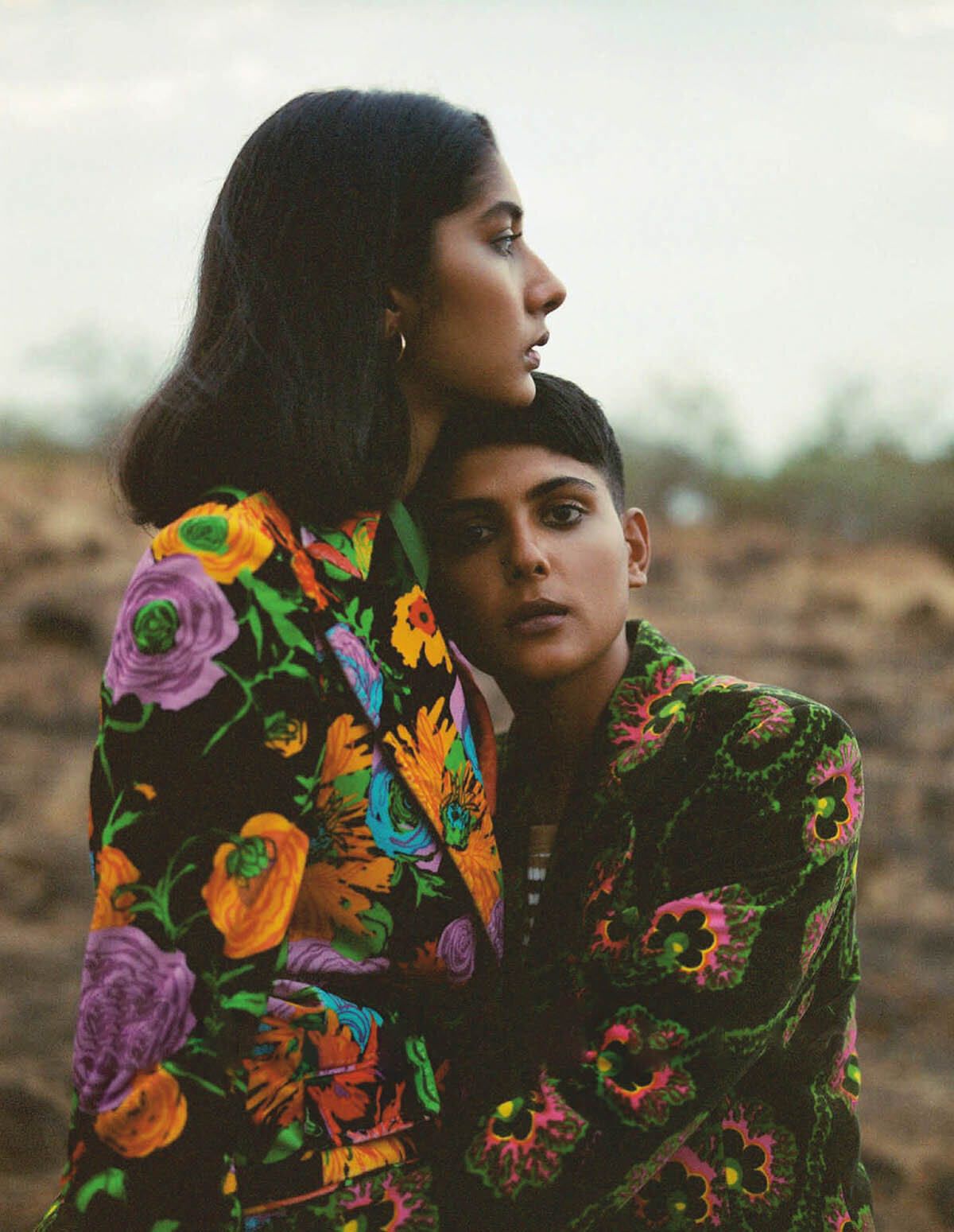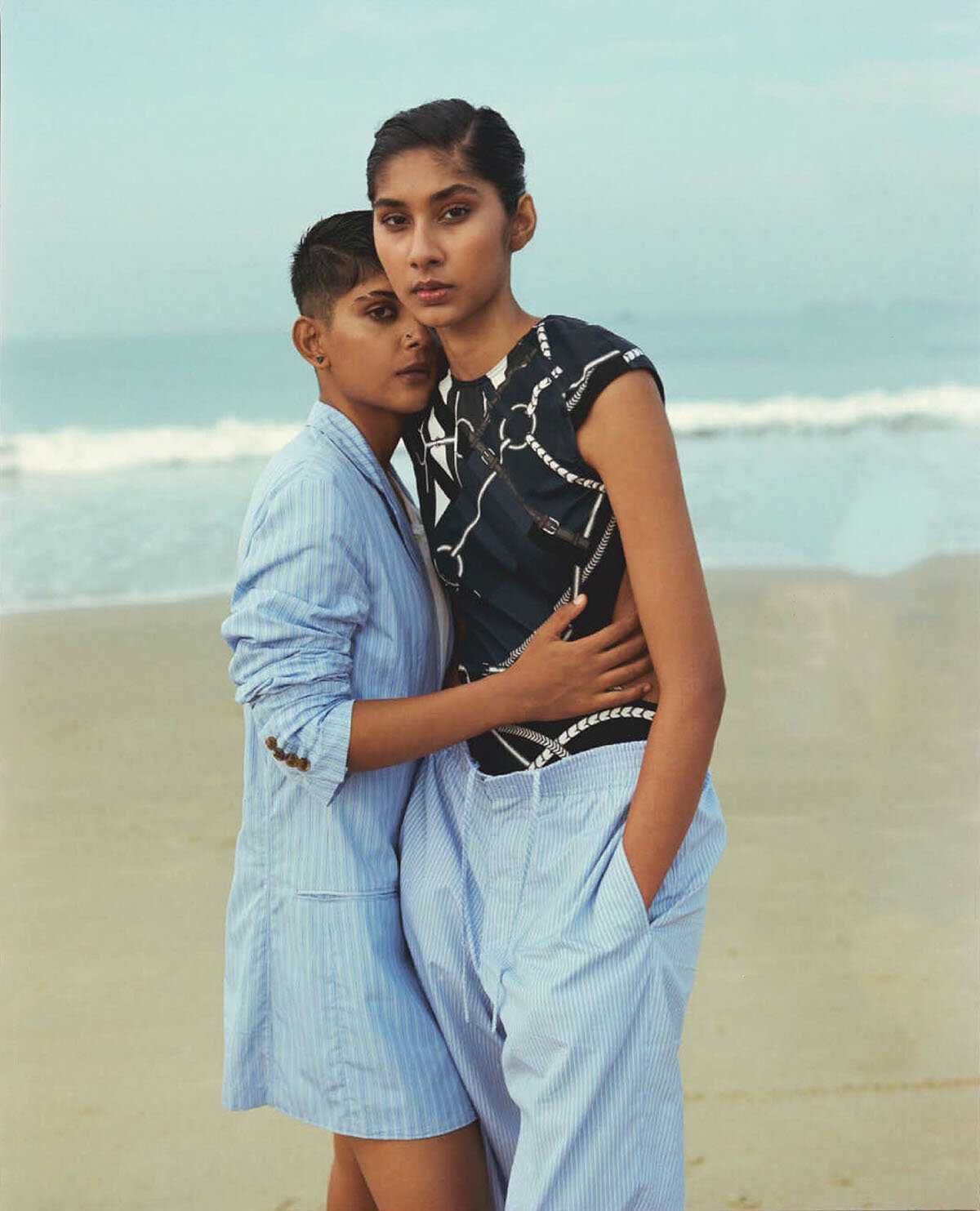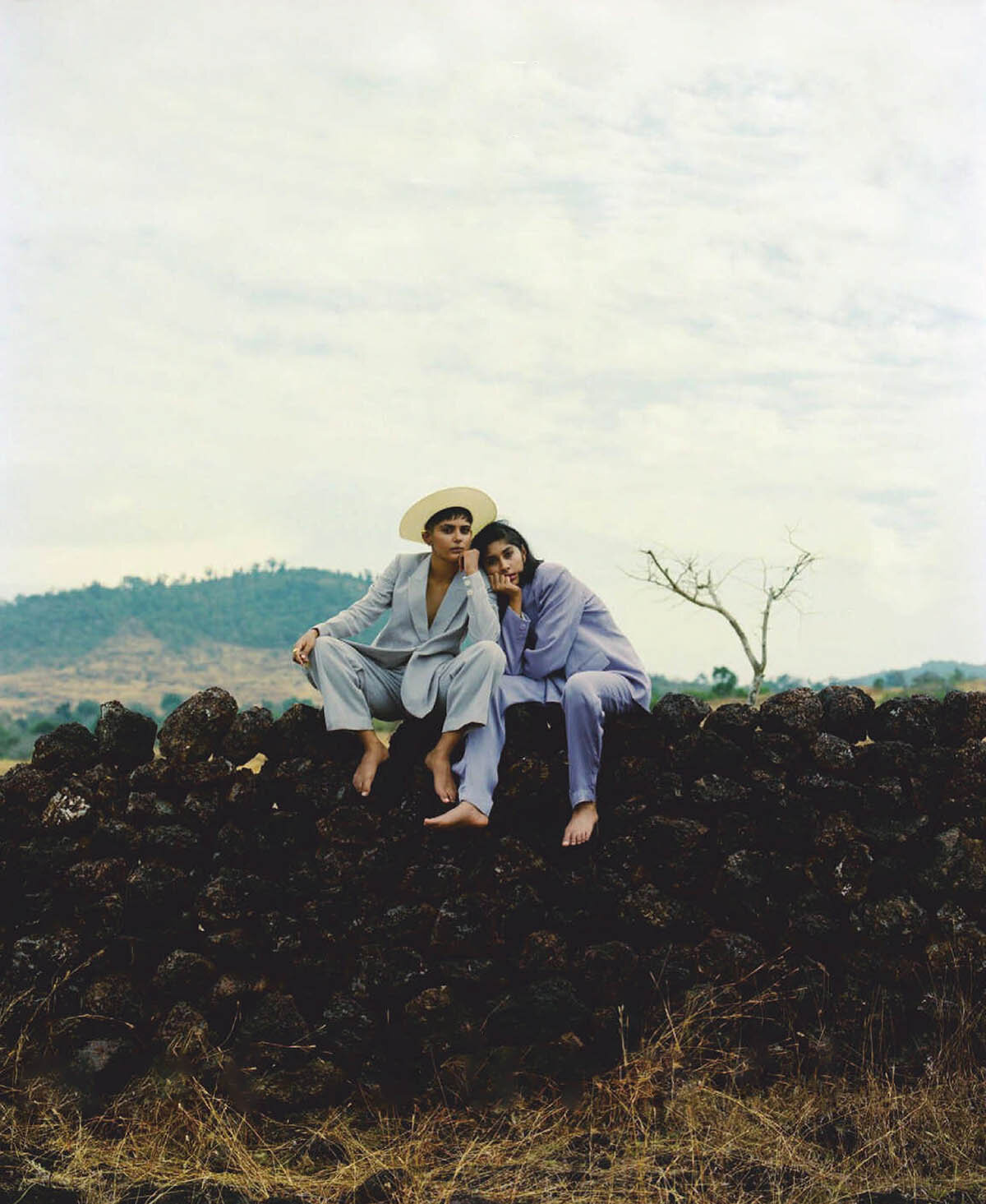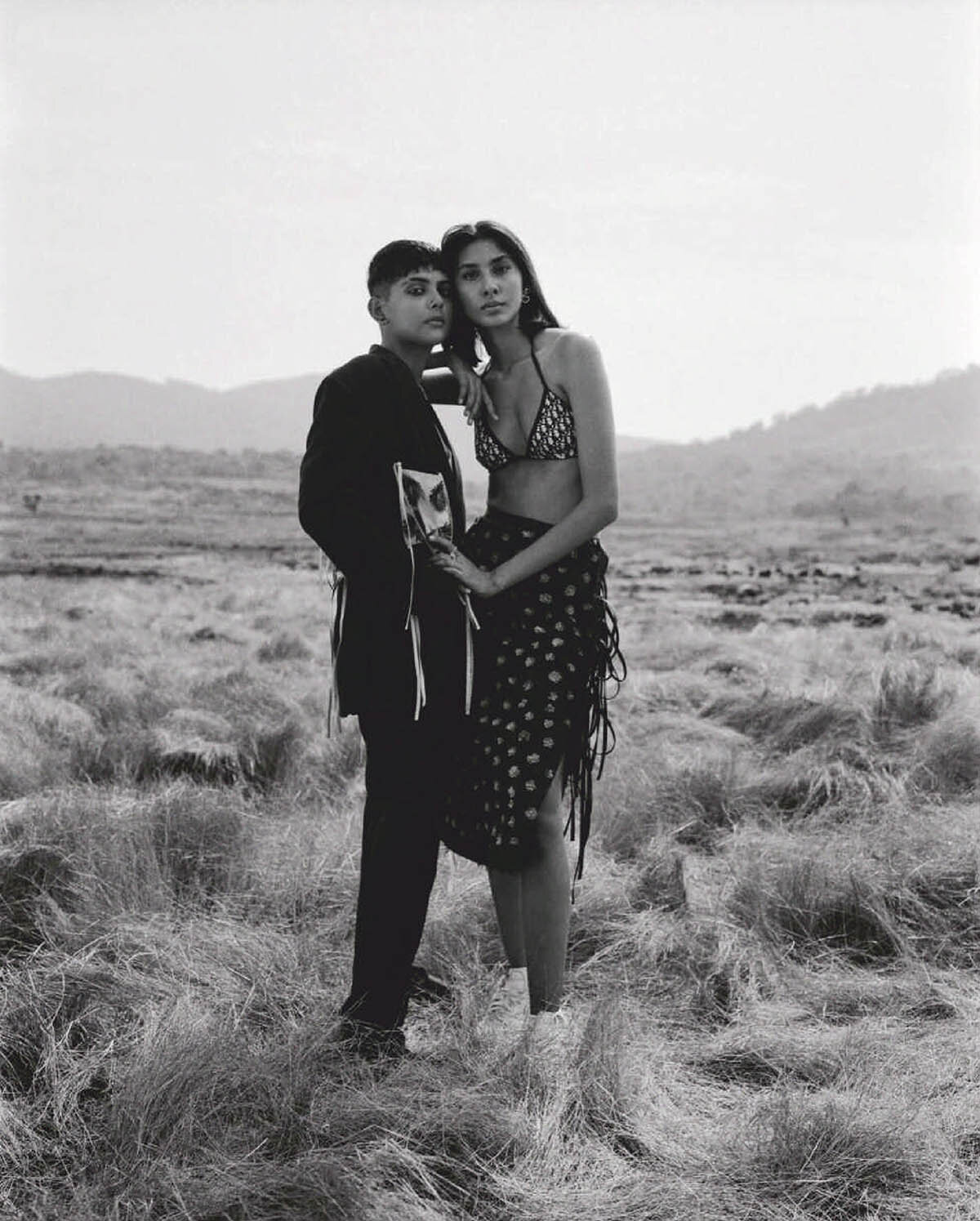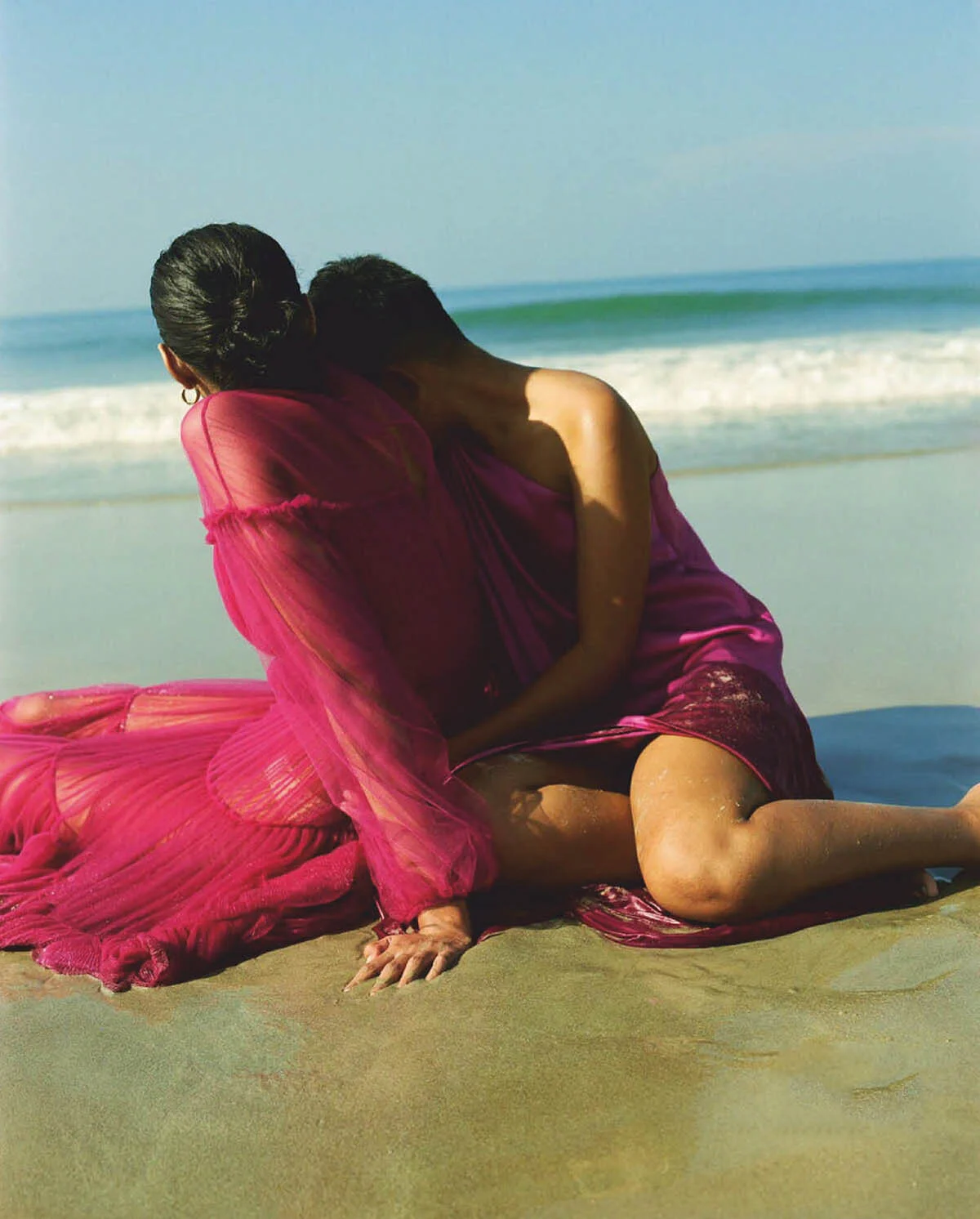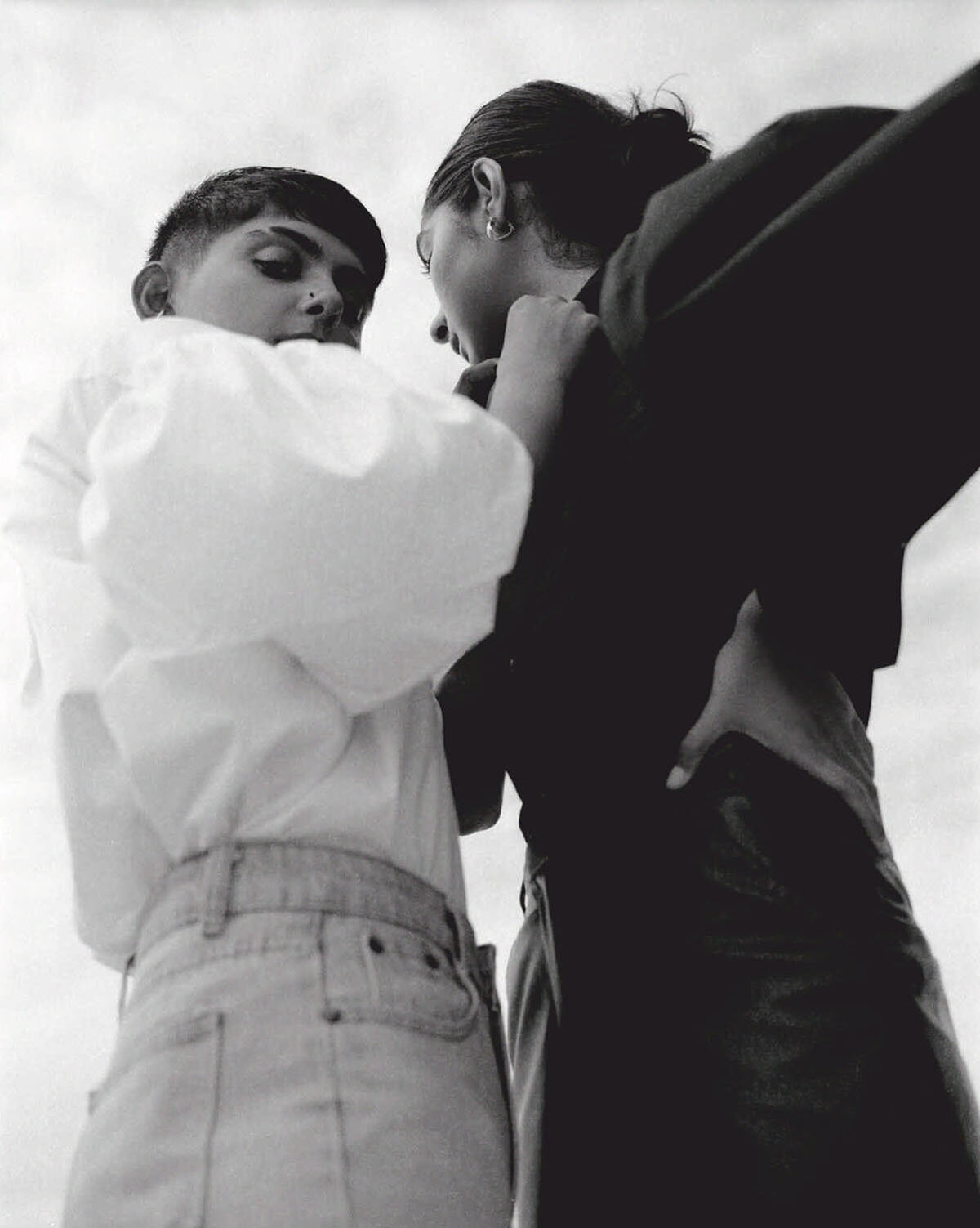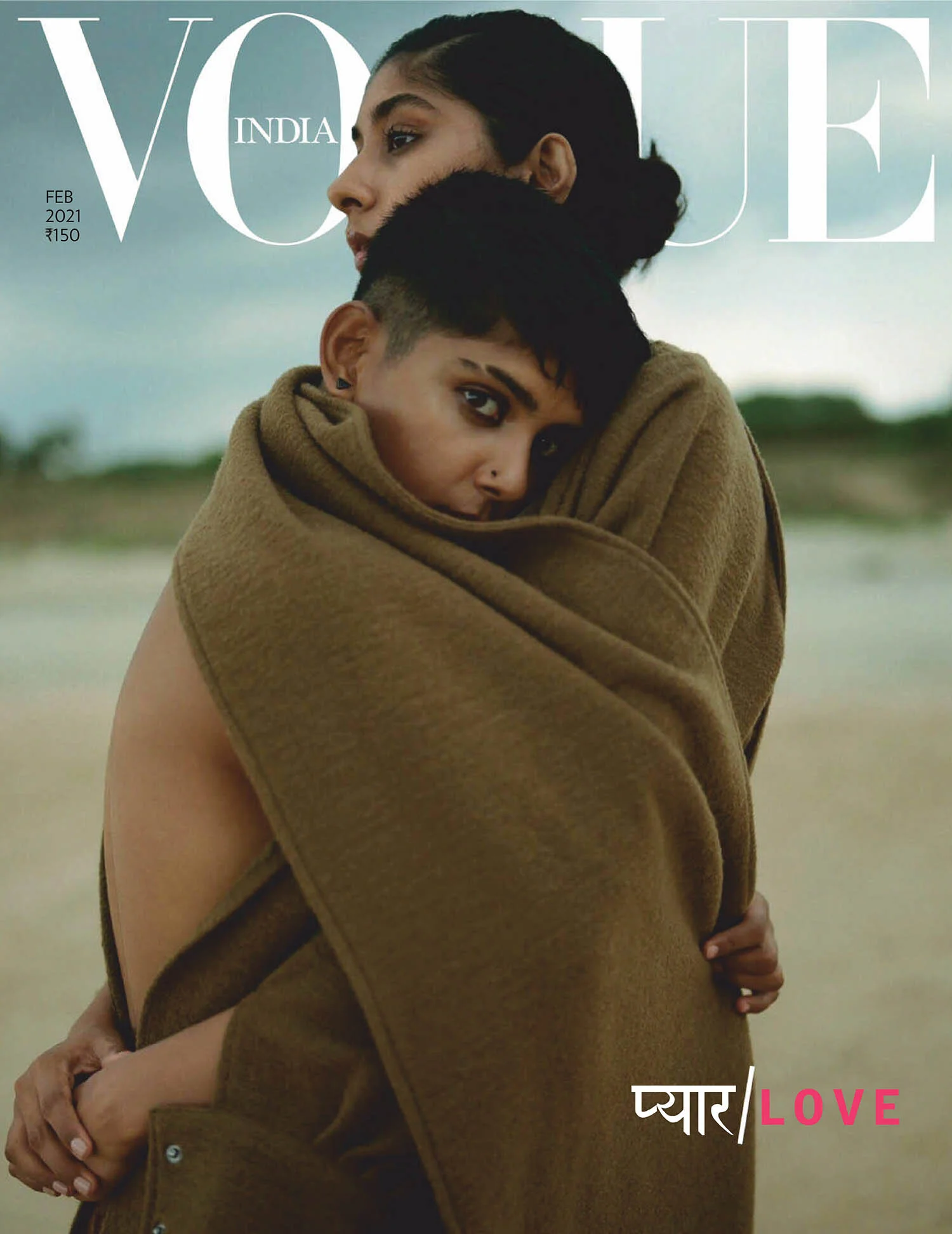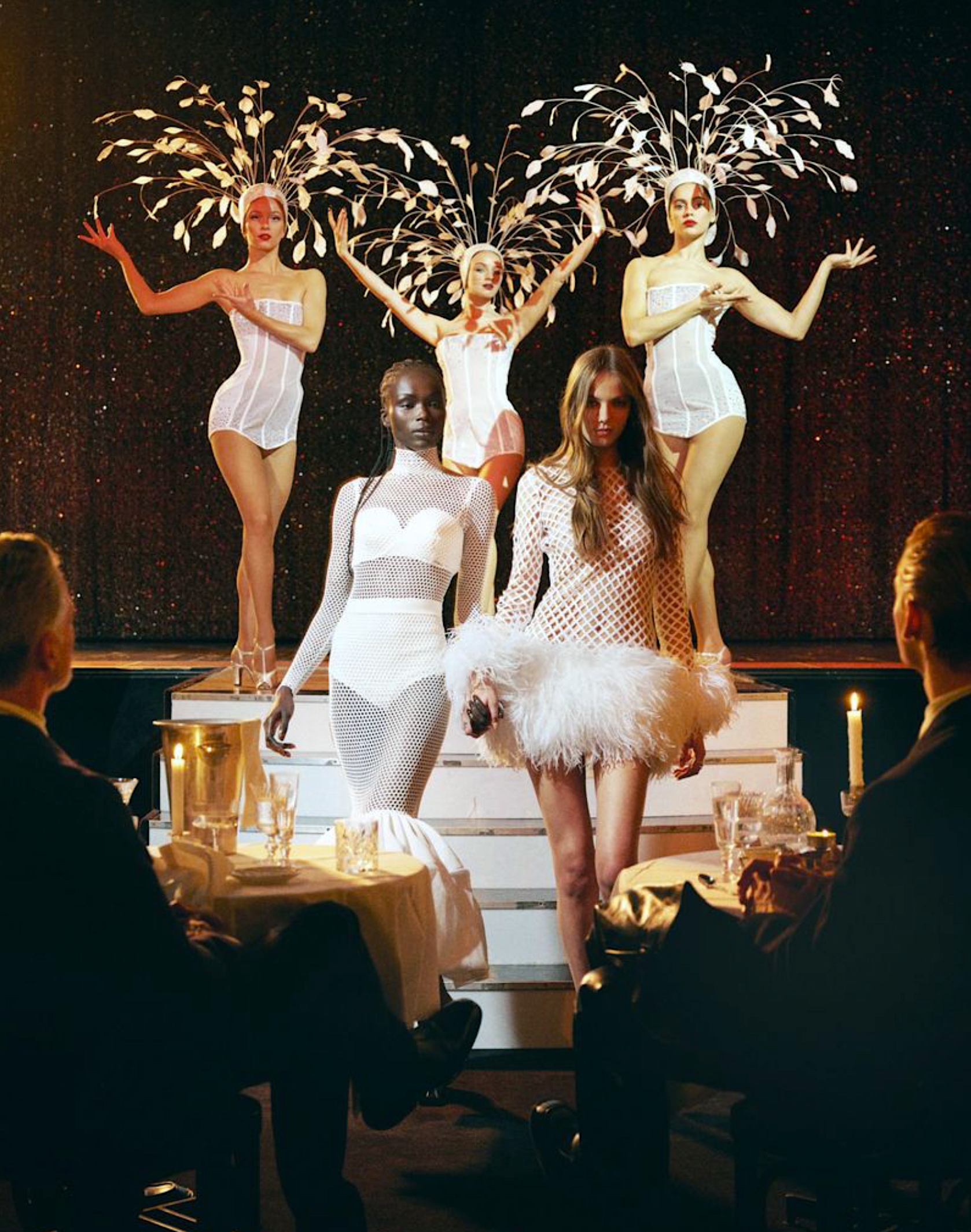Bikramjit Bose Eyes Haima Simones + Shruti Venkatech LGBTQ First Vogue India Cover
/The February 2021 cover of Vogue India celebrates modern love, featuring Haima Simoes and Shruti Venkatesh as the first same-sex couple to headline the magazine. The couple is wrapped in ‘The Ted’ scarf coat from conscious fashion label Ura Maku. / Hair and makeup by Mitesh Rajani
For the cover story ‘When Haima Met Shruti’, Bikramjit Bose [IG] photographs the couple in designs from Dior, Dhruv Kapoor, Gucci, Hermès, Levi’s, QUOD, Ralph & Russo, SavioJon, Simone Rocha x H&M, Little Things Studio and more.
Vogue India stylist Priyanka Kapadia does a good job of mixing established luxury labels not known for their sustainability or conscious-focus identity with 21st century, artisan-inspired brands like Ura Maku, QUOD, Little Things Studio, Note that 1) Savio Jon doesn’t appear to have a regular production schedule; and 2) Dhruv Kapoor was awarded 2019 Designer of the year- womenswear by Vogue India and says his label is devoted to celebrating female energy. There’s no mention of how the brand supports women and female energy and no discussion of sustainability at all on the website that AOC has discovered. Apologies in advance if the error in misunderstanding either label belongs to AOC.
On September 6, 2018, the five-judge Constitution Bench of India’s Supreme Court unanimously struck down the provisions of Section 377 of the Indian Penal Code that previously criminalised consensual same sex relations. Previously, in a 2013 case, a two-judge Supreme Court bench overturned the Delhi High Court case striking down the section 377.
This first-ever Vogue India cover is published within this context of changing laws in India for the LGBTQ community. Neville Bhandara writes the story: Haima Simoes and Shruti Venkatech on their relationship: ‘We’re not just a couple, we’re also best friends. We take on everything as a team”.
Both Haima and Shruti have struggled with mental health issues associated with new anxieties in our COVID-19 world. Vogue India is devoting considerable space to writing about these challenges in its pages. A key point is also made about India’s LGBTQ_ movement having a larger male-appearing face, a reality that AOC observes in the hour we’ve spent updating ourselves on the 377 court decision and related content about India’s LGBTQ community. Haima and Shruti explain:
If you look at India’s LGBTQ+ movement, you’ll notice that it is largely privileged, upper-class, upper-caste cis gay men who are in the spotlight. Where are the women? They might be producing some of the most amazing, sex-positive content (Gaysi), establishing a collective for queer women and trans* folx (LABIA), fighting for trans* rights across India (Grace Banu and Santa Khurai, to name but two champions) and harnessing the power of digital to change the perception of the trans* community (Rachana Mudraboyina, via her YouTube channel TransVision), but we’re missing more women on the front lines in terms of visibility. “This is linked to coming out, or the lack thereof,” says Venkatesh. “Most of the time, you need some combination of financial, emotional and physical security before you can live the life you want to. That is not a privilege many queer women, especially outside metros, can afford. As women, our access to social, financial opportunities is already limited, and that shrinks further when you’re queer.”



